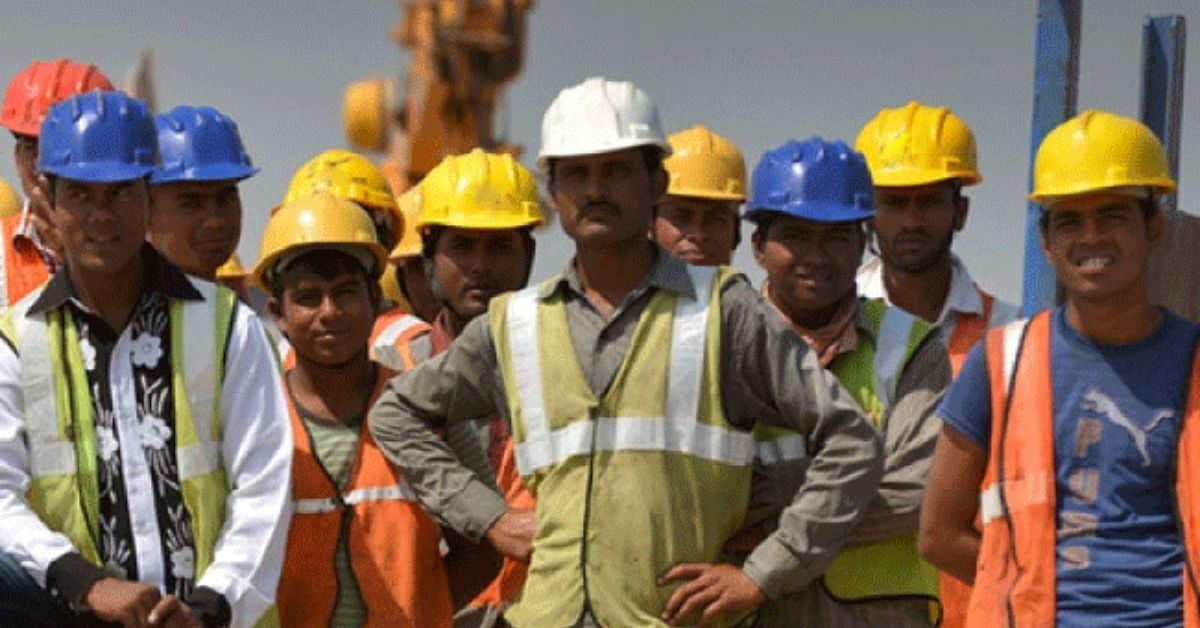Firms in Tirupur, India’s largest garment hub, are operating with only about 60% of their usual workforce. In Surat, which houses some 6,000 diamond-cutting units, about 4,00,000 migrant workers and artisans or 40% of the industry’s labour force, haven’t yet returned to work since Holi.
Fabric production in Surat, also a textiles hub, has crashed by a fourth to three crore metres a day. Leather units in Chennai face up to 20% drop in labour participation.
Export hubs of key labour-intensive industries, already struggling to cope with a liquidity squeeze, are facing a shortage of workers, as most migrant labourers keep away just when orders from crucial western markets start to pour in.
The shortage — in the range of 20% to 40% of the usual workforce — threatens to derail the recent growth momentum and impair exporters’ ability to honour supply commitments on time amid a fast depletion of inventory.
Exporters of textiles, garments, leather products and gem and jewellery from hubs, such as Tirupur, Chennai, Mumbai and Surat, that FE spoke to said fears of a possible third Covid wave and consequent lockdown in states have kept most migrant workers at bay and even discouraged some overseas buyers from getting into fresh contracts.

In some cases (mainly in garments), buyers in the US and the EU are insisting on firm commitment by Indian suppliers on timely delivery, well before the crucial Christmas season, the exporters said. Unsurprisingly, MSMEs are hit harder than large entities.
The Tirupur garment cluster — with 1,000-odd units, mostly MSMEs — employs around 6,00,000 people. About a half of them are migrant labourers. Even many local workers couldn’t join work until recently, as public transportation wasn’t allowed during lockdowns imposed by the state to contain second wave.
Raja M Shanmugham, managing director of Warshaw International and president of the Tirupur Exporters’ Association, suggested that states be prudent while imposing restrictions and there should be predictability in policy prescriptions. Large-scale vaccinations must be undertaken in key industrial areas and credit flow to MSMEs need to be substantially bolstered, he said.
The norms under the Emergency Credit Line Guarantee Scheme (ECLGS), especially on 10% additional loans, should be relaxed to facilitate greater lending to those units that don’t want to go for a loan recast, Shanmugham said.
Of course, labour participation is improving with the easing of localised lockdown curbs but is still way off the normal levels, the exporters said. This will prevent exporters, at least temporarily, to fully take advantage of the rebound in demand in key export markets.
Importantly, having shot up sharply in April and May, growth in the country’s shipments of garments and leather products lost pace in June and remained much lower than a 48% jump in overall merchandise exports. While exports of garments grew 25% in June, those of leather products rose 33%. However, gem and jewellery export grew 81% in June but it was driven by a massive base effect.
Dinesh Navadiya, chairman of the Gems and Jewellery Export Promotion Council (Gujarat region), said the absence of nearly 4,00,000 migrant artisans and workers in the diamond hub of Surat has weighed down production by up to 20% across units. Many exporters in the hub are struggling to deliver on time, he added. About 90% of the world’s rough diamonds are being cut and polished in Surat. The 6,000 diamond-cutting-and-polishing units in the city employ about one million people.
Similarly, power loom weavers in Surat are forced to operate in only one shift due to lower worker participation. “We are experiencing a 30-35% shortage in the workforce. Weaving is a highly labour-intensive industry,” said Mayur Golwala, president of Sachin Industrial Estate, which houses hundreds of weaving units near Surat.
Golwala, also the secretary of the Federation of Gujarat Weavers Association, said that the labour shortage has driven down fabric production to just above three crore meters from about 4 crore meter fabric per day.
Nearly two million people are working in different segments of the textile industry in Surat, which includes composite mills, spinning and weaving units, processing houses and about 400 textile trading markets. Every segment of the textile value chain in Surat is short of labour forces, Golwala pointed out.
Source : Financial Express








